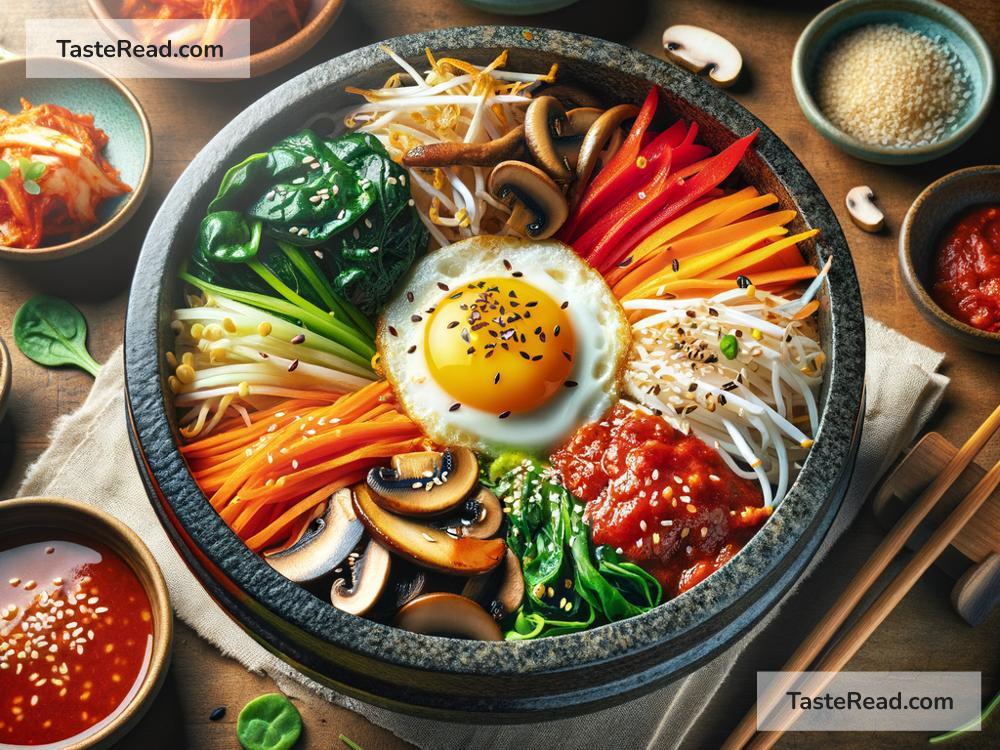Indulging in Mouthwatering Korean Bibimbap Creations in Seoul, South Korea
If you’re traveling to Seoul, South Korea, you’re in for a treat. One of the most delicious and healthy dishes you must try is Bibimbap. This word, which means “mixed rice,” is more than just a meal—it’s a celebration of colors, flavors, and textures that represents Korean culture. Whether you’re a foodie or just someone looking to explore new cuisines, Bibimbap is a must-try dish. In this blog, we’ll dive into what makes Bibimbap so special, where to find the best versions in Seoul, and why this iconic meal is such an unforgettable experience.
What is Bibimbap?
Bibimbap is a traditional Korean dish made with steamed rice, fresh vegetables, savory meat, and flavorful sauces. The beauty of Bibimbap lies in its perfect balance of taste, nutrition, and presentation. Each bowl is typically topped with a variety of colorful ingredients, such as carrots, cucumbers, spinach, bean sprouts, and mushrooms. You’ll also find protein options, like beef, chicken, or tofu. To give it an extra punch, Bibimbap is often topped with a fried egg and seasoned with gochujang, a spicy red chili paste, or soy sauce.
The fun part of eating Bibimbap is that you mix all the ingredients together before you take your first bite. The combination of textures—from the crunchy vegetables to the hearty rice—creates a unique flavor profile that is both comforting and exciting.
The History Behind Bibimbap
Bibimbap has a fascinating history that reflects Korea’s traditions and lifestyle. The dish is believed to have been enjoyed as far back as the 16th century. Farmers and workers would mix leftover ingredients with rice to create a simple, satisfying meal. Over time, this humble dish evolved into an iconic Korean creation that is now famous worldwide.
In Korean culture, Bibimbap also represents harmony and balance. Its use of different colors—like green, red, yellow, white, and brown—is thought to symbolize the natural elements of the universe. Eating Bibimbap isn’t just a delicious experience; it’s a connection to Korea’s history and philosophy.
Different Types of Bibimbap
While the classic Bibimbap is amazing, there are different variations that highlight the creativity of Korean cuisine. Here are a few popular types you might come across in Seoul:
-
Jeonju Bibimbap
This version comes from the city of Jeonju and is considered the gold standard of Bibimbap. The ingredients are luxurious, featuring flavored rice cooked in beef broth, marinated raw beef, and a variety of high-quality vegetables. -
Dolsot Bibimbap
If you love crispy textures, you’ll fall in love with dolsot bibimbap, which is served in a sizzling hot stone bowl. The heat from the bowl creates a crunchy layer of rice at the bottom, adding even more depth to the dish. -
Vegetarian Bibimbap
For those who don’t eat meat, vegetarian Bibimbap options are widely available. Korean chefs make creative use of mushrooms, tofu, and other fresh produce to create a dish that’s just as flavorful. -
Seafood Bibimbap
If you’re near the coastal areas, you might find Bibimbap made with fresh seafood like prawns, squid, or mussels. It’s a delicious twist that seafood lovers will enjoy.
Where to Eat Bibimbap in Seoul
Seoul is filled with incredible restaurants and street food stalls, so finding Bibimbap is easy. Here are some great places to try this dish:
-
Gogung
Located in Insadong, Gogung specializes in traditional Jeonju-style Bibimbap. The atmosphere is cozy, and the presentation of the dish is a work of art. -
Myeongdong Food Street
If you’re exploring the bustling streets of Myeongdong, you’ll find small eateries offering Bibimbap. These spots give you the chance to enjoy affordable and authentic flavors. -
Bukchon Hanok Village
After wandering through traditional Korean houses, visit a nearby restaurant that serves Bibimbap with a side of history. Many dining spots here focus on heritage-style recipes. -
Underground Food Courts
Many shopping malls in Seoul have food courts where you can find Bibimbap at reasonable prices. It’s an easy and convenient way to try this delicious meal.
Making Bibimbap a Memorable Experience
Eating Bibimbap in Seoul is more than just trying an iconic dish—it’s an opportunity to immerse yourself in Korean food culture. When you enjoy Bibimbap, take a moment to appreciate the care that goes into every bowl. From the freshly prepared ingredients to the perfect balance of flavors, this dish is a true representation of Korea’s culinary expertise.
Don’t forget to experiment with the sauce. Add as much or as little gochujang as you like to suit your taste. Pair the meal with traditional side dishes, like kimchi, to complete your Korean dining experience.
Final Thoughts
Seoul is a paradise for food lovers, and Bibimbap is one of the highlights of Korean cuisine. Whether you’re enjoying a fancy Jeonju-style Bibimbap or a simple bowl from a street vendor, the flavors will leave you amazed. This dish doesn’t just satisfy your hunger—it tells a story of Korea’s history, values, and creativity. Make sure Bibimbap is on your list when you explore Seoul, and get ready for an unforgettable culinary adventure!


